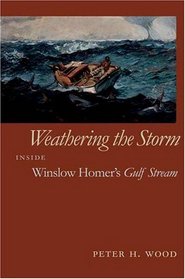Search -
Weathering the Storm: Inside Winslow Homer's Gulf Stream (Mercer University Lamar Memorial Lectures)
Weathering the Storm Inside Winslow Homer's Gulf Stream - Mercer University Lamar Memorial Lectures
Author:
Perhaps no other American painting is at once so familiar and so little understood as Winslow Homer’s The Gulf Stream (1899). For more than a century, scholars have praised the artist and yet puzzled over this harrowing scene of a black man adrift in the open sea, in a derelict boat surrounded by sharks. Critical commentary, when it has dep... more »
Author:
Perhaps no other American painting is at once so familiar and so little understood as Winslow Homer’s The Gulf Stream (1899). For more than a century, scholars have praised the artist and yet puzzled over this harrowing scene of a black man adrift in the open sea, in a derelict boat surrounded by sharks. Critical commentary, when it has dep... more »
ISBN-13: 9780820326252
ISBN-10: 0820326259
Publication Date: 7/2004
Pages: 128
Rating: ?
ISBN-10: 0820326259
Publication Date: 7/2004
Pages: 128
Rating: ?
0 stars, based on 0 rating
Publisher: University of Georgia Press
Book Type: Hardcover
Members Wishing: 0
Reviews: Amazon | Write a Review
Book Type: Hardcover
Members Wishing: 0
Reviews: Amazon | Write a Review
Genres:
- Arts & Photography >> Individual Artists >> ( G-I ) >> Homer, Winslow
- Arts & Photography >> Individual Artists >> General
- Arts & Photography >> History & Criticism >> General
- Arts & Photography >> History & Criticism >> Regional >> African American
- Arts & Photography >> History & Criticism >> Criticism
- History >> Americas >> United States >> General
- Literature & Fiction >> World Literature >> United States >> Classics >> General
- Nonfiction >> Social Sciences >> Specific Demographics >> African American Studies




